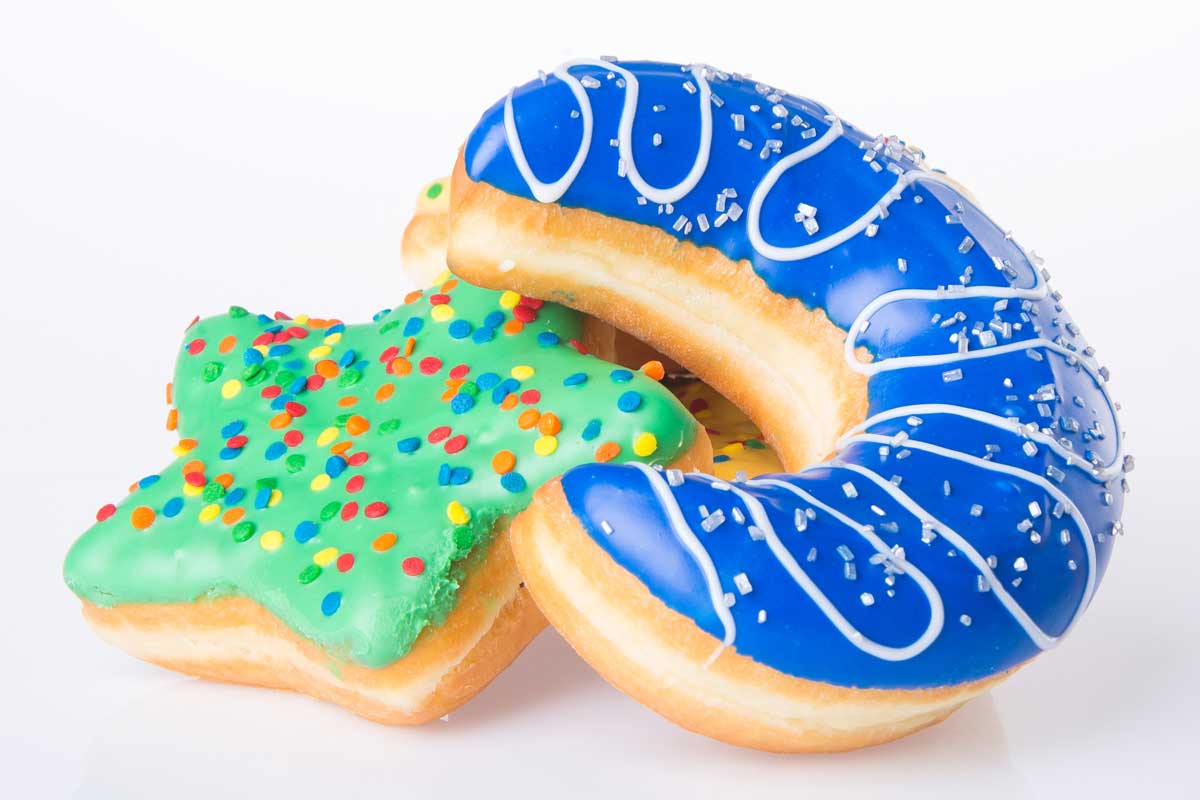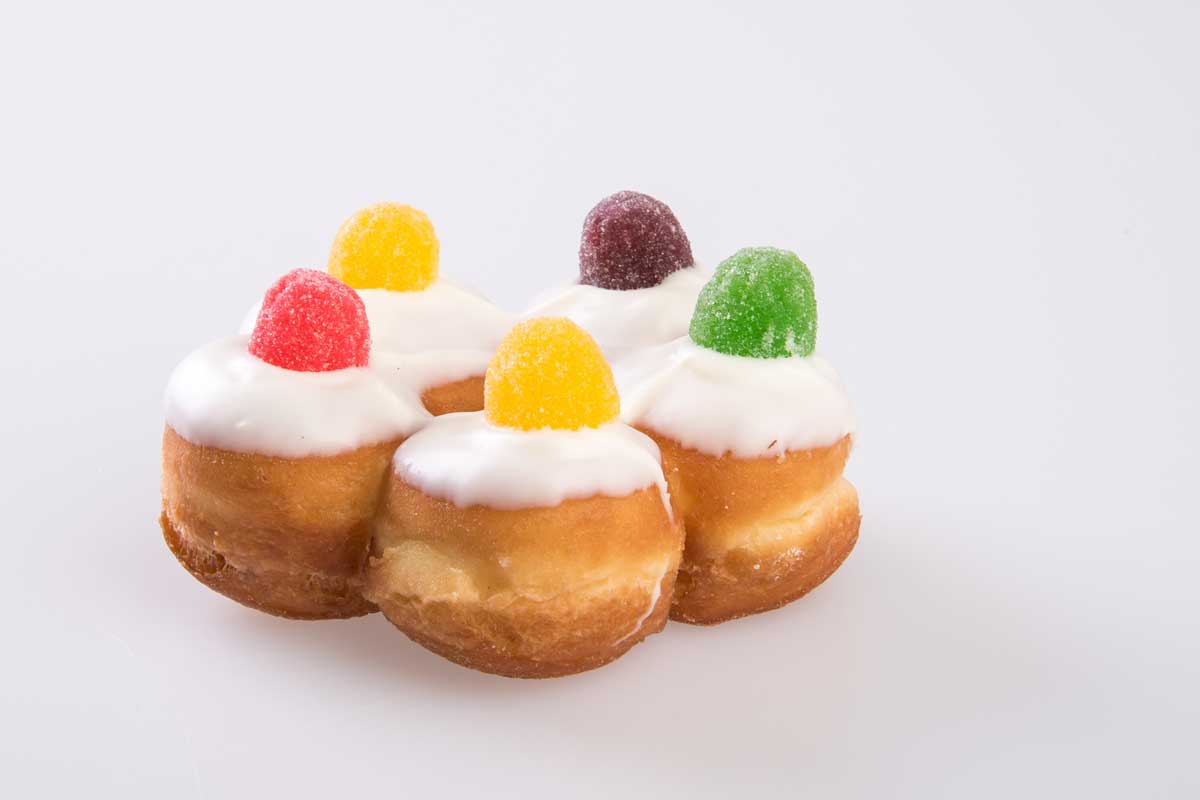Saying today’s consumers are demanding is quite the understatement. As soon as the next big thing hits, it’s the new baseline, and people have begun a new search.
While on one hand there’s no denying the popularity of classic rings, shaped donuts like squares and hexagons are joining bismarks, long johns, twists, minis and donut holes in the spotlight.
“One big trend today is a hexagonal or square version of the ring donut,” said Nick Magistrelli, vice president of sales, Rademaker USA. “And the long john isn’t going anywhere, either. It’s a classic, signature product.”
As the foodservice landscape experiences ongoing shifts caused by coronavirus (COVID-19)-related mandates and an impending recession, donut producers will likely need to get creative with their offerings to develop enticing products that scream bang-for-the-buck. That means equipment will need the flexibility and reliability to change with the times.
“It’s important to consider if the market for these types of products is large enough to make it profitable and warrant a change in production,” suggested Ken Weekes, international sales manager, WP Bakery Systems.
A trend is one thing, but for long-standing consumer demands, certain shapes may be worth considering.
What customers want
Sometimes it’s not just a need to stand out on the everyday donut shelf. Seasonality also brings easy opportunities for product development, whether it’s a heart shape in February, a star during July, a Christmas tree in December or October’s ever-popular pumpkin and spider shapes.
At Moline Machinery, David Moline, vice president, sales and marketing, also sees seasonality bringing demand for a variety of shapes as well as sizes.

“We pride ourselves on being responsive to making almost any shape a customer could ask for,” Mr. Moline said. “There are holiday shapes and football shapes, and portion size is also a factor. Mini donuts on the yeast and cake side are always very popular, whether it’s mini rings or donut holes.”
While the classic funky shapes like old-fashioned and French crullers are still in play — not to mention fritters and cinnamon rolls — some donut makers are finding global inspiration in their product development, and it’s on the radar for equipment manufacturers. Mike Baxter, product information and marketing coordinator, Belshaw Adamatic Bakery Group, has seen one up-and-comer show potential for a hot trend.
“Mochi, or rice flour, donuts can be made on any cake donut depositor and have been popular in Asia for their taste, texture and defined shapes,” Mr. Baxter observed.
While most wholesalers selling into retail outlets are sticking to the mainstays and leaving the varietals to those bakers with their own retail shops, variety could be the ticket to give consumers the eating-out experience at their own kitchen table as they eat at home more often.
That said, making a switch like that could cut into efficiency, so operators must proceed with caution.
“Many wholesalers and large producers stick to just a few varieties, sometimes only one, so changeovers on very large, fully automated equipment can cut into production time and efficiency,” Mr. Baxter said.
Bakers who are focused on one specific type of donut might rely on a contingency in case they have to switch production into a different type or if they simply want to expand the product offerings.
Some donut makers are finding global inspiration in their product development.
“Sometimes bakers will have a dedicated line and then have a backup line,” Mr. Magistrelli said. “They’ll have one line pumping out fresh daily products. But if for some reason a line goes down, they might have a reversible sheeter or a small semi-automated line in the facility to fire up and get that daily order out.”
For donut makers, product development can be a multilayered proposition that can include seasonality and consumer demand and ultimately lead to the final factor: what their customers want. To help sort through it all, Rondo offers its “Dough How” services to help bakers develop new recipes and processes.
“This support is not limited to the dough makeup itself,” said Coen Nikkels, manager of marketing and business development, Rondo Industrial Solutions. “Our specialists also have extensive knowledge of ingredient evaluation, mixing, proofing and frying.”
Over the years, Mr. Nikkels noted, Rondo has helped bakers develop hundreds of donut shapes and sizes.
No matter what, though, flexibility is always the name of the game.
Flexibility with consistency
If a baker is making — or introducing — new shapes, the first thing to remember is that dough development considerations should be made throughout the entire process.
“Any variable changes in the process could have a domino effect on the end product,” said Randy Kelly, applications specialist, Fritsch, a Multivac company. “Dough development can have an effect on proofing and as well as frying. One way to dial in the consistency is to have good integration between the equipment throughout the process.”
For consistency’s sake, sheeting lines must be designed to treat the yeast-raised dough properly, too. Fritsch sheeting lines focus on creating a continuous, uniform dough sheet through all the reduction steps.
“When a dough sheet is formed, it is crucial to maintain the already developed structure of the dough, even when processing large amounts of natural dough,” Mr. Kelly said. “Fritsch uses a SoftProcessing technology to process all dough types very gently. Starting from forming the dough sheet to stress-free sheeting through to the transfer of the makeup line, the components lay the foundation for consistency and quality of the final product.”
On yeast-raised sheeting lines, the flexibility to make ring donuts in circle, hexagonal or square shapes is key.
“Most of the time, bakers talk about shape control, not the thickness,” Mr. Magistrelli said. “The flexibility of shapes on a yeast-raised donut line is a pivotal point in who they do business with because at the end of the day, they want to make a variety of products. The line needs to be flexible enough that, if a customer calls them wanting a seasonal donut or something different like a star, they can make it happen.”
For yeast-raised donuts, different orders can be filled with stamping, guillotine or rotary cutter technology.

“A donut line needs to have the right basic technology such as our stamping and rotary cutting technology,” Mr. Moline said.
He also noted that the company can easily add technology to make honeybuns and fried cinnamon rolls, as well.
Mr. Nikkels also noted that Rondo’s equipment is designed to create a variety of donut types.
“To produce different shapes and forms, you just need to insert a stamping die with the desired form and adjust the product dimension on the panel, and then you can start the production,” he said. “Rondo sheeting lines are well-known for the easy exchange of stamping dies with no need for tools.”
Although shaped cake donuts aren’t as common, there’s equipment for items outside the standard ring.
“If a bakery is going to make several donut varieties on one frying line, then the changeovers need to be quick,” Mr. Baxter advised. “Belshaw MS/MDDRF cake cutters can changeover quite quickly between different plungers.”
Belshaw also offers PLC touchscreens to help operators easily change processing conditions with preset parameters.
“It makes changeovers much easier,” Mr. Baxter said.
To accommodate for a variety of shapes and sizes,
Mr. Moline suggested that considering the donut line as one continuous piece instead of the individual components will simplify the process.
“It’s actually a lot of simple things that make a line very flexible,” Mr. Moline said. “We supply all that technology to create a fully automated system with sheeting, proofing and frying.”
This article is an excerpt from the June 2020 issue of Baking & Snack. To read the entire feature on donut tech, click here.






